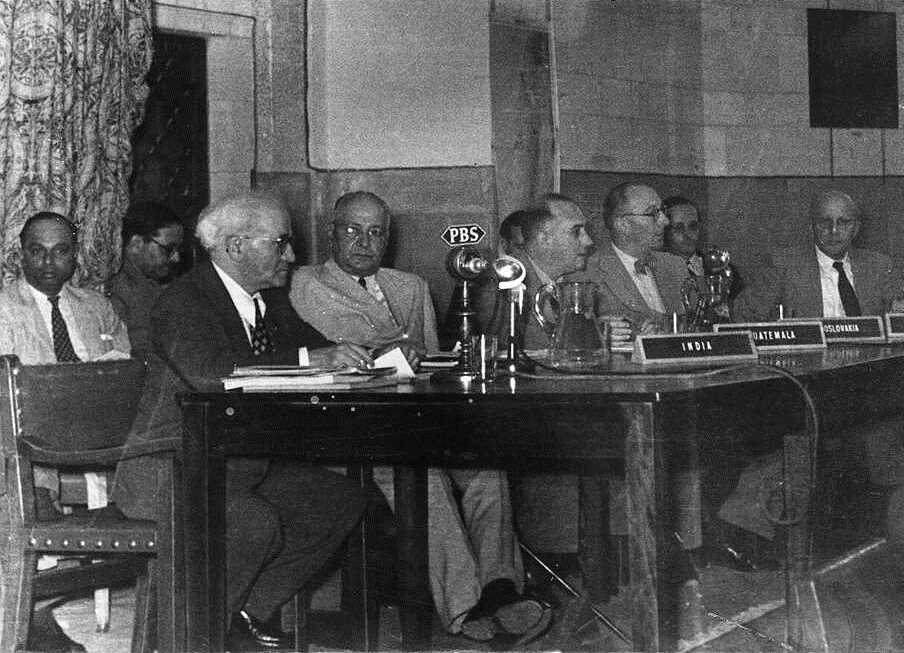This year we are marking 70 years since the approval of the Partition Plan on 29th November. The Partition Plan was formulated by a United Nations special commission of inquiry called the UNSCOP (Committee United Nations Special Committee on Palestine).
The British Government sought a solution to the complex situation in Palestine and appealed to the United Nations for help. The UN decided to send a commission of inquiry to the Land of Israel to formulate recommendations for action. The countries that sent representatives to the Committee were Australia, Uruguay, Iran, Guatemala, India, the Netherlands, Yugoslavia, Peru, Czechoslovakia, Canada and Sweden. The people who were chosen, were from small countries who had not previously publicized an opinion on the issue of Palestine, The elected representatives did try to maintain a balance in their work.
UNSCOP in Palestine, 14.7.1947 (PHG\1085481)
The Committee arrived in Palestine in June 1947, and heard testimonies in Palestine, in Arab countries in the region, and thereafter in the DP camps in Europe. The Yishuv cooperated actively with the members of the Committee and enlisted in its entirety in providing the requested information and presenting its demands. The Arab side refused to cooperate with the Committee and its claims were transferred to the Committee indirectly, via informal meetings and talks with moderate Arab countries. The British side did not want to lean to any side, so the British gave evidence that clung to the facts and did not relate to controversial issues. The Committee members felt that Britain did not adequately explain itself, and therefore concluded that the British Mandate should be terminated.
The UNSCOP Committee also toured Palestine. The members of the Committee were impressed by the development of the Jewish community and its mature preparedness for the establishment of an independent state, compared to the Arab population. During the Committee's stay in Palestine, the illegal immigrant ship "Exodus" arrived in Haifa. The UNSCOP Committee visited the port of Haifa while the "Exodus" was anchored, with about 4,500 Holocaust survivors, and the ship was later returned to Germany by the British. In the course of its work, the Committee also came to the DP camps in Europe, where it heard from many of the refugees, of their desire to reach Palestine. In the end, the Committee decided to divide the country into two states – one Jewish, and one Arab.
The CZA holds photographs of the UNSCOP Committee hearing testimonies and touring throughout Palestine.
The UNSCOP Committee carrying out its work, YMCA Building, Jerusalem (PHG\1085487)

David Ben-Gurion testifying before the UNSCOP Committee (PHG\1085514)
Members of the UNSCOP Committee walking in a field of flowers in Kibbutz Revivim
during their tour in Palestine (PHG\1085515)